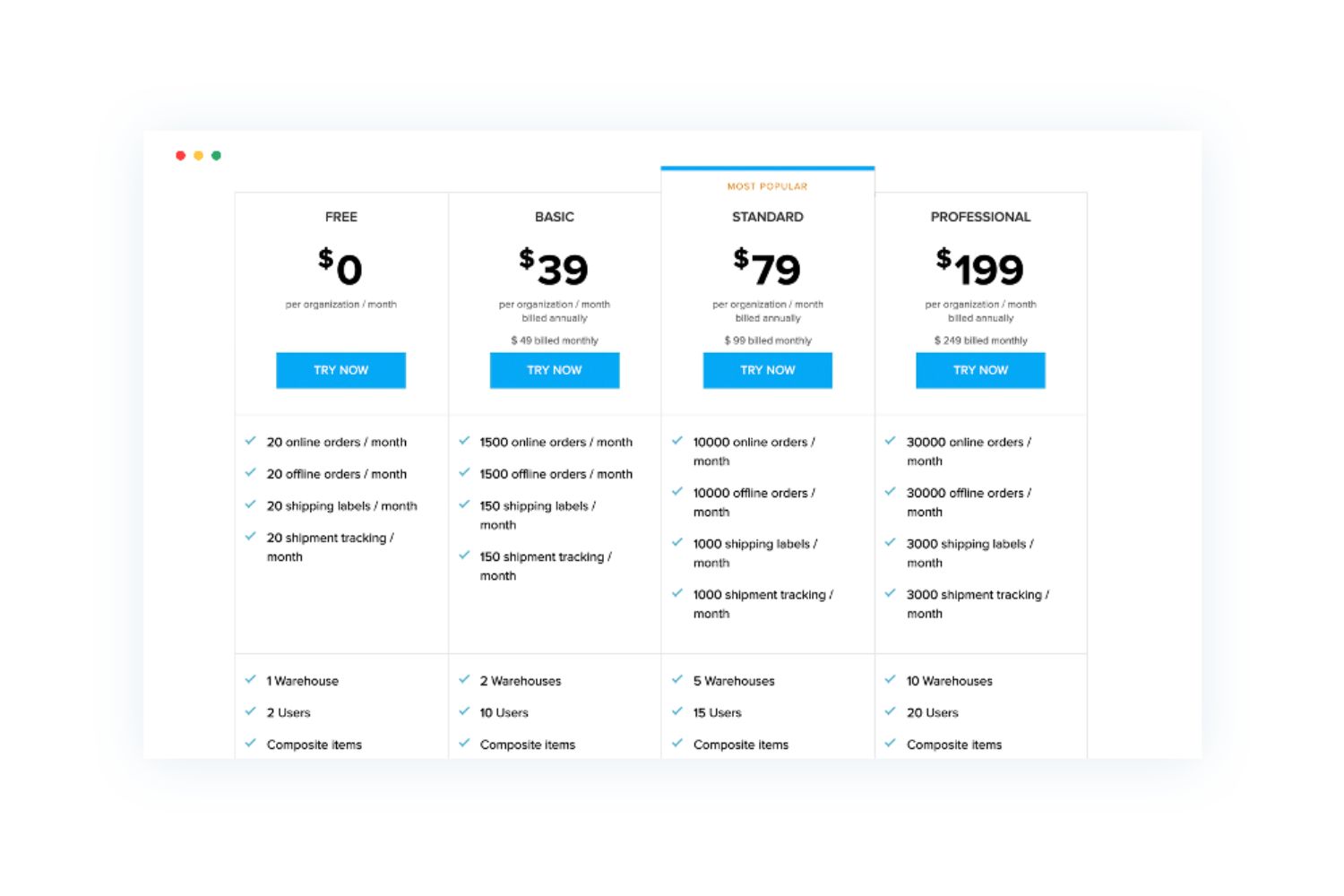Introduction
The business landscape is becoming increasingly customer-centric, with organizations prioritizing the delivery of exceptional customer experiences. However, investing in customer experience enhancements often requires justification to gain buy-in from stakeholders and secure the necessary resources. In order to convince decision-makers of the value of customer experience investments, businesses must have a solid understanding of the potential return on investment (ROI).
Justifying the business value of customer experience investments involves demonstrating the impact on key performance indicators (KPIs) and financial outcomes. By showcasing tangible benefits, such as increased revenue and reduced costs, as well as intangible benefits like customer loyalty and brand reputation, organizations can position customer experience investments as strategic business priorities.
This article will provide a comprehensive framework for justifying customer experience investments, enabling businesses to make evidence-based decisions and secure funding for CX initiatives. By following these steps, organizations can effectively communicate the value proposition of investing in the customer experience and gain support from key stakeholders.
The Importance of Justifying Customer Experience Investments
Investing in customer experience has become a strategic imperative for businesses across industries. Customers today have higher expectations and demand seamless experiences throughout their journey with a brand. To deliver exceptional experiences, organizations need to allocate resources and make substantial investments in various customer touchpoints, technology solutions, and employee training.
However, without proper justification, securing the necessary budget and resources for customer experience initiatives can be challenging. This is where a robust business case for customer experience investments becomes crucial. Justifying these investments helps organizations demonstrate to stakeholders the potential ROI and the long-term benefits they can expect to reap.
One of the key reasons why justifying customer experience investments is important is that it enables businesses to align their priorities with the expectations of their target customers. By understanding customers’ needs and pain points, organizations can implement improvements that directly address these issues and enhance the overall experience. When customer expectations are met or exceeded, it can lead to increased customer satisfaction, loyalty, and advocacy.
Moreover, by justifying customer experience investments, organizations can showcase their commitment to putting customers at the center of their operations. This can have a positive impact on brand perception, as customers today value companies that prioritize their needs and provide personalized and exceptional experiences.
Another significant reason to justify customer experience investments is to optimize business operations and improve efficiencies. By investing in customer experience enhancements, organizations can streamline processes, eliminate pain points, and reduce customer effort. This can lead to cost savings in the long run and improve overall operational performance.
Furthermore, justifying customer experience investments helps organizations measure the impact of their initiatives on key performance indicators (KPIs) and financial outcomes. By setting clear objectives and metrics, businesses can track the progress and effectiveness of their customer experience initiatives. This data-driven approach enables organizations to make informed decisions, prioritize investments, and continuously optimize their customer experience strategies.
In summary, justifying customer experience investments is imperative for organizations looking to thrive in today’s highly competitive business landscape. By aligning business goals with customer expectations, showcasing commitment to customer-centricity, optimizing operations, and measuring the impact of initiatives, businesses can secure funding, gain stakeholder support, and deliver exceptional customer experiences that drive long-term success.
The Customer Experience ROI Framework
Measuring the return on investment (ROI) of customer experience initiatives is crucial for businesses to validate the value of their investments and make data-driven decisions. The customer experience ROI framework provides a systematic approach for organizations to assess the financial impact of their customer experience strategies. By following this framework, businesses can effectively quantify the benefits of customer experience investments and communicate the value to key stakeholders.
The customer experience ROI framework consists of several key steps:
- Understand Key Business Objectives: Start by identifying the business objectives that align with the customer experience investments. This could include increasing customer satisfaction, improving customer retention rates, or driving revenue growth.
- Identify Customer Experience Metrics: Determine the specific metrics that will be used to measure the success of customer experience initiatives. This could include metrics such as Net Promoter Score (NPS), customer satisfaction scores, or customer churn rates.
- Measure Current Performance: Assess the current performance of the organization in relation to the identified metrics. This will provide a baseline for measuring the impact of customer experience enhancements.
- Set Targets and Goals: Based on the business objectives, set ambitious yet realistic targets for improvement in the selected metrics. These targets will serve as benchmarks for evaluating the success of customer experience initiatives.
- Determine Cost of Improvements: Evaluate the cost associated with implementing customer experience enhancements. This includes expenses such as technology investments, employee training, or process improvements.
- Estimate Revenue Impact: Determine how the customer experience investments are expected to impact revenue. This could be through increased customer lifetime value, higher average order values, or a reduction in customer churn.
- Calculate Return on Investment: Apply a formula to calculate the return on investment (ROI) of the customer experience initiatives. This involves comparing the financial impact of the improvements against the cost of implementation.
- Quantify Intangible Benefits: In addition to the financial impact, consider the intangible benefits of customer experience investments. These could include improvements in brand reputation, customer loyalty, or employee morale.
- Present the Business Case: Finally, compile all the data and insights gathered throughout the ROI framework into a compelling business case. Present this case to key stakeholders and decision-makers to gain support and secure the necessary resources for customer experience investments.
By following the customer experience ROI framework, organizations can not only justify their customer experience investments but also track and optimize the impact of these initiatives over time. This data-driven approach enables businesses to make informed decisions, prioritize investments, and continuously improve the customer experience to drive long-term business success.
Step 1: Understand Key Business Objectives
Before embarking on any customer experience investments, it is crucial to clearly define the key business objectives that these investments aim to support. This step lays the foundation for aligning customer experience strategies with overarching organizational goals and ensures that the investments have a meaningful impact on the business.
When identifying key business objectives, organizations should consider both short-term and long-term goals. Short-term objectives may include improving customer satisfaction, reducing customer churn, or increasing customer loyalty. Long-term objectives may involve driving revenue growth, expanding market share, or enhancing brand reputation.
To understand key business objectives, organizations can engage in various activities:
- Internal Stakeholder Interviews: Speak with key stakeholders within the organization, such as executives, department heads, or managers, to gain insights into their specific goals and priorities. These discussions will help identify the objectives that customer experience investments should align with.
- Review Organizational Strategies: Analyze existing strategic plans and initiatives to identify any customer-centric objectives outlined by the organization. This could include initiatives related to digital transformation, customer-centric culture, or customer relationship management.
- Market Research: Conduct comprehensive market research to understand industry trends, customer expectations, and the competitive landscape. This research will provide valuable insights into the business objectives that will help the organization stay ahead in the market.
- Customer Feedback Analysis: Analyze customer feedback data, such as surveys, reviews, and customer support interactions, to identify recurring pain points or areas of improvement. This feedback can highlight business objectives that focus on resolving customer issues and enhancing the overall customer experience.
- Financial Analysis: Evaluate the financial performance of the organization and identify areas that require improvement. This could include increasing profitability, reducing operational costs, or optimizing resource allocation.
Once key business objectives are identified, it is important to prioritize them based on their impact and alignment with the organization’s mission and vision. This prioritization will help in defining the customer experience initiatives that will have the most significant business impact.
To summarize, understanding key business objectives is the first step in justifying customer experience investments. By aligning customer experience strategies with these objectives, organizations can ensure that their investments drive meaningful results and contribute to the overall success of the business.
Step 2: Identify Customer Experience Metrics
In order to measure the success of customer experience investments and demonstrate their impact, organizations must identify the appropriate customer experience metrics. These metrics serve as quantifiable measures of specific aspects of the customer experience and provide valuable insights into customer satisfaction, loyalty, and overall brand perception.
When identifying customer experience metrics, organizations should consider a combination of operational, financial, and experiential metrics that align with their key business objectives. Here are some commonly used customer experience metrics:
- Net Promoter Score (NPS): NPS measures customer loyalty by asking customers how likely they are to recommend a brand to others. It provides a benchmark for evaluating the strength of customer relationships and gauging potential business growth through customer referrals.
- Customer Satisfaction Score (CSAT): CSAT measures customers’ satisfaction with a specific interaction or experience. It is typically measured through surveys or feedback forms and helps organizations assess the effectiveness of individual touchpoints in meeting customer expectations.
- Customer Effort Score (CES): CES measures the level of effort required from customers to interact with a brand or accomplish a specific task. It indicates the ease of doing business with the organization and helps identify areas where improvements can be made to reduce customer effort.
- Customer Retention Rate: This metric tracks the percentage of customers who continue to do business with a company over a specific period of time. A high customer retention rate indicates strong customer loyalty and satisfaction.
- Customer Lifetime Value (CLTV): CLTV measures the total revenue a customer generates for a business over their entire relationship with the company. It helps organizations understand the long-term value of their customer base and the return on investment from acquiring and retaining customers.
- Average Resolution Time: This metric measures the time it takes for customer issues or inquiries to be resolved. A shorter average resolution time indicates efficient customer service and a positive customer experience.
- Online Channel Performance: Metrics such as website traffic, conversion rate, bounce rate, and average session duration provide insights into the performance of the online channels. These metrics help assess the effectiveness of digital touchpoints and online customer experiences.
While the above metrics provide a starting point, it is important for organizations to select metrics that are relevant to their specific industry, business model, and customer journey. It’s also essential to ensure that these metrics can be accurately measured and tracked over time.
Once the customer experience metrics are identified, organizations can establish baseline measurements, set targets for improvement, and track progress to demonstrate the impact of customer experience investments. These metrics will serve as a powerful tool for gauging success, identifying areas for improvement, and making data-driven decisions.
In summary, step 2 in justifying customer experience investments is to identify the most relevant customer experience metrics. These metrics will help organizations measure and track the impact of their customer experience initiatives, gauge customer satisfaction, and drive improvements aligned with their key business objectives.
Step 3: Measure Current Performance
Measuring the current performance of the organization in terms of customer experience provides a baseline for evaluating the impact of future improvements. This step involves assessing existing customer experience metrics, analyzing customer feedback, and collecting relevant data to gain insights into the current state of the customer experience journey.
There are several methods and tools that organizations can use to measure the current performance of their customer experience strategies:
- Customer Surveys: Conducting surveys can provide valuable insights into customer satisfaction levels, perceptions, and pain points. Surveys can be administered online, via email, or through in-person interviews to gather quantitative and qualitative data from customers.
- Mystery Shopping: Implementing mystery shopping programs allows organizations to gain an understanding of the actual experiences customers have when interacting with the brand. Mystery shoppers provide detailed evaluations of various touchpoints, highlighting both positive and negative aspects of the customer experience.
- Customer Feedback Analysis: Analyzing customer feedback from sources such as online reviews, social media comments, and customer support interactions provides real-time insights into customer sentiment, common issues, and areas for improvement.
- Customer Journey Mapping: Creating customer journey maps helps organizations visualize the end-to-end experience that customers have when interacting with their brand. By mapping out each touchpoint and customer interaction, businesses can identify pain points, gaps, and opportunities for enhancement.
- Data Analytics: Leveraging data analytics tools and metrics allows organizations to gain deeper insights into customer behavior, engagement, and conversion rates. By analyzing website traffic, click-through rates, and conversion funnels, businesses can identify areas where the customer experience can be improved.
- Operational Metrics: Beyond customer-specific metrics, organizations should also assess operational metrics that impact the customer experience, such as average handling time, first contact resolution rate, and call abandonment rate. These metrics provide insights into the efficiency and effectiveness of customer service operations.
By measuring current performance, organizations can identify gaps and prioritize areas that require immediate attention. This data-driven approach provides a clear understanding of where customer experience improvements are most needed and validates the need for customer experience investments.
It is important to note that customer experience measurement is an ongoing process. Regularly tracking and monitoring performance metrics allows organizations to identify trends, measure the effectiveness of implemented changes, and make informed decisions on future investments.
To summarize, step 3 in justifying customer experience investments is to measure the current performance of the organization’s customer experience initiatives. By leveraging customer surveys, feedback analysis, journey mapping, data analytics, and operational metrics, organizations can gain insights into their strengths, weaknesses, and areas of improvement in order to enhance the overall customer experience.
Step 4: Set Targets and Goals
Setting targets and goals is a critical step in justifying customer experience investments. It involves defining specific and measurable objectives that organizations aim to achieve through their customer experience initiatives. Setting targets provides a benchmark for evaluating the success of these investments and helps align efforts towards desired outcomes.
When setting targets and goals, organizations should consider the following:
- Metrics Alignment: Ensure that the targets align with the customer experience metrics identified in step 2. The goals should directly reflect the desired improvements in these metrics, such as increasing customer satisfaction scores or reducing customer churn rates.
- Realistic Yet Ambitious: Set targets that are both achievable and challenging. This helps in driving continuous improvement and motivates teams to strive for excellence. It is important that goals are based on a realistic assessment of the organization’s current performance and resources.
- Timeframes: Establish clear timeframes for achieving the set targets. This enables organizations to track progress over time and ensure that the customer experience initiatives are making a measurable and timely impact.
- Segmentation: Consider segmenting targets and goals based on specific customer segments or touchpoints. This allows organizations to focus their efforts on areas that have the most significant impact on customer experience and tailor strategies accordingly.
- Long-Term Vision: While short-term goals are important, it is essential to also have a long-term vision for customer experience improvement. Set goals that align with the organization’s broader strategic objectives and contribute to sustainable business growth.
- Employee Involvement: Involve employees in the goal-setting process to foster ownership and commitment. By soliciting their input and aligning their individual objectives with the overall customer experience goals, organizations can create a culture of customer-centricity.
Setting targets and goals helps organizations track progress, measure the impact of customer experience investments, and justify their value. These targets provide a tangible way to demonstrate the effectiveness of customer experience initiatives and showcase the return on investment (ROI) to stakeholders.
Regularly monitoring and reviewing progress towards these goals is crucial. This allows organizations to make necessary adjustments, identify any barriers or obstacles, and realign strategies as needed to stay on track towards achieving their desired customer experience outcomes.
In summary, step 4 in justifying customer experience investments is to set targets and goals. By aligning these goals with the identified metrics, ensuring their realism and ambitiousness, establishing timeframes, segmenting efforts when necessary, and involving employees in the process, organizations can drive continuous improvement and validate the impact of their customer experience investments.
Step 5: Determine Cost of Improvements
Once the targets and goals for customer experience initiatives are established, organizations must determine the cost associated with implementing the necessary improvements. This step involves identifying the resources, investments, and expenses required to enhance the customer experience and achieve the set objectives.
When determining the cost of improvements, organizations should consider the following factors:
- Technological Investments: Assess the need for technology upgrades or investments to improve customer touchpoints, such as implementing a new customer relationship management (CRM) system or enhancing the organization’s website or mobile app.
- Employee Training and Development: Consider the cost of providing training and development programs to employees to enhance their customer service skills, product knowledge, or customer interaction abilities.
- Process Improvements: Analyze the existing customer experience processes and identify areas that require improvement. This may involve streamlining processes, reducing customer effort, or implementing new workflows to enhance efficiency and effectiveness.
- Design and User Experience (UX) Enhancements: Evaluate the need for design changes to improve the overall user experience. This includes elements such as website redesign, mobile app enhancements, or simplifying the checkout process.
- Data Analytics Tools and Systems: Consider the cost of implementing data analytics tools and systems to gather and analyze customer feedback, behavior, and insights. These tools help organizations make data-driven decisions and continuously optimize the customer experience.
- Customer Engagement Initiatives: Determine the cost of customer engagement initiatives, such as loyalty programs, customer feedback campaigns, or personalized marketing campaigns. These initiatives help foster stronger relationships with customers and enhance their overall experience.
- Resource Allocation: Evaluate the need for additional resources, such as hiring customer service representatives, UX designers, or data analysts, to support the customer experience improvement efforts.
By determining the cost of improvements, organizations can estimate the financial investment required to achieve the desired customer experience outcomes. It is important to consider both the initial costs of implementation and the ongoing costs of maintaining and optimizing these improvements.
Once the cost of improvements is determined, it is essential to align these costs with the expected return on investment (ROI) and the potential benefits that the customer experience initiatives will generate. This helps in building a strong business case for the investments and provides a clear overview of the financial impact of these improvements.
In summary, step 5 in justifying customer experience investments is to determine the cost of the necessary improvements. By considering aspects such as technological investments, employee training, process improvements, design enhancements, data analytics tools, customer engagement initiatives, and resource allocation, organizations can accurately estimate the financial investment required to enhance the customer experience and achieve the desired goals.
Step 6: Estimate Revenue Impact
Estimating the potential revenue impact of customer experience improvements is crucial in justifying the value of these investments. This step involves quantifying the financial benefits that the organization can expect to see as a result of enhancing the customer experience.
When estimating the revenue impact, organizations should consider the following factors:
- Customer Lifetime Value (CLTV): Calculate the potential increase in CLTV resulting from improved customer experience. This involves assessing factors such as increased purchase frequency, higher average order value, and reduced customer churn.
- Customer Acquisition: Analyze the potential impact on customer acquisition. Enhanced customer experience often leads to positive word-of-mouth, referrals, and an increased likelihood of attracting new customers.
- Upselling and Cross-Selling Opportunities: Identify the potential for upselling and cross-selling by delivering exceptional customer experiences. Satisfied customers are more likely to explore additional products or services offered by the organization.
- Repeat Purchases: Estimate the potential increase in repeat purchases. When customers have a positive experience, they are more likely to become loyal and repeat buyers, resulting in a consistent revenue stream.
- Reduced Customer Support Costs: Consider the potential reduction in customer support costs that may result from improvements in the customer experience. By resolving issues more efficiently and effectively, fewer resources may be needed for customer support, leading to cost savings.
- Brand Reputation and Customer Loyalty: Assess the impact of improved customer experience on brand reputation and customer loyalty. A positive reputation and loyal customer base can lead to increased customer retention, decreased price sensitivity, and improved customer lifetime value.
- Market Differentiation: Evaluate the potential for market differentiation through superior customer experience. Positioning the organization as a leader in customer-centricity can attract new customers and create a competitive advantage.
Estimating the revenue impact requires analyzing historical data, industry benchmarks, and customer behavior patterns. By leveraging customer insights, market research, and predictive modeling, organizations can quantify the potential financial benefits that customer experience improvements can bring.
It is important to note that revenue impact estimation may involve some level of forecasting and assumptions. However, by utilizing relevant data and conducting thorough analysis, organizations can provide a reasonable estimate of the potential revenue impact.
In summary, step 6 in justifying customer experience investments is to estimate the revenue impact. By considering factors such as customer lifetime value, customer acquisition, upselling and cross-selling opportunities, repeat purchases, reduced customer support costs, brand reputation, customer loyalty, and market differentiation, organizations can quantify the potential financial benefits that can be attributed to enhancing the customer experience.
Step 7: Calculate Return on Investment
Calculating the return on investment (ROI) is a critical step in justifying customer experience investments. This step involves analyzing the financial impact of customer experience improvements against the cost of implementation to determine the overall return on investment.
When calculating the ROI, organizations should consider the following factors:
- Financial Benefits: Summarize the estimated revenue impact and cost savings resulting from the customer experience improvements. This includes factors such as increased customer lifetime value, reduced customer churn, cost savings in customer support, and potential revenue growth.
- Cost of Improvements: Aggregate the cost of implementing the customer experience improvements identified in Step 5. This includes expenses associated with technology upgrades, employee training, process improvements, design enhancements, and other related investments.
- Timeframe: Consider the timeline over which the ROI will be calculated. Typically, organizations evaluate the ROI over a specific period, such as one year or multiple years, depending on the nature of the investments and the expected financial impact.
- Calculation Methodology: Use a standard ROI formula to calculate the return on investment. Subtract the cost of improvements from the financial benefits achieved and divide the result by the cost of improvements. Multiply the quotient by 100 to express the ROI as a percentage.
- Assumptions and Sensitivity Analysis: Document any assumptions made during the ROI calculation process and conduct sensitivity analysis to understand the potential impact of changes in key variables or factors influencing the ROI estimates.
- Comparison and Benchmarking: Compare the calculated ROI against industry benchmarks or similar customer experience initiatives to assess the performance and effectiveness of the organization’s investments. This provides a context for stakeholders and decision-makers to understand the value generated.
Calculating the ROI of customer experience investments provides a clear indication of the financial value generated by enhancing the customer experience. The calculated ROI can be communicated to stakeholders, demonstrating the effectiveness of the investments and supporting the justification for customer experience initiatives.
Keep in mind that ROI is just one aspect of the value delivered by customer experience investments. While the financial impact is important, intangible benefits such as improved brand image, customer loyalty, and employee morale should also be considered in the overall evaluation.
In summary, step 7 in justifying customer experience investments is to calculate the return on investment. By considering the financial benefits, cost of improvements, timeframe, calculation methodology, assumptions, and benchmarking, organizations can quantify the financial value generated by their customer experience investments, supporting the business case and decision-making process.
Step 8: Quantify Intangible Benefits
Quantifying the intangible benefits of customer experience investments is essential in justifying their value and depicting the full picture of the impact these investments can have on the organization. While financial metrics provide a tangible measure, intangible benefits capture the less tangible but equally important aspects of enhanced customer experience.
When quantifying intangible benefits, organizations should consider the following factors:
- Brand Reputation: Assess the impact improved customer experience has on the organization’s brand reputation. This can be measured through brand sentiment analysis, social media reach, or online reviews and ratings.
- Customer Loyalty and Advocacy: Calculate the potential increase in customer loyalty and advocacy resulting from improved customer experience. This can be measured through metrics such as customer retention rates, referral rates, or positive customer feedback.
- Employee Satisfaction and Engagement: Quantify the impact of improved customer experience on employee satisfaction and engagement levels. Happy and engaged employees are more likely to deliver exceptional customer service and contribute to a positive customer experience.
- Competitive Advantage: Evaluate the potential competitive advantage gained through superior customer experience. This can be assessed by comparing market positioning, customer perception, and differentiation against competitors.
- Customer Perception: Measure how improved customer experience influences customer perceptions of the organization. This can be done through customer surveys, feedback analysis, or perception metrics such as perceived quality or perceived value.
- Employee Productivity: Estimate the potential increase in employee productivity resulting from improved customer experience. When employees have the tools, resources, and customer-centric mindset, they can be more efficient and effective in serving customers.
- Employee Retention: Consider the impact of improved customer experience on employee retention rates. When employees feel valued and engaged in delivering exceptional experiences, they are more likely to stay with the organization.
Quantifying intangible benefits may require qualitative assessments, surveys, and benchmarking against industry standards and customer feedback. Organizations can use customer feedback analysis tools, conduct employee satisfaction surveys, or seek insights through external market research to collect data on these intangible aspects.
By quantifying the intangible benefits, organizations can showcase the holistic value of customer experience investments. This provides a comprehensive view of the long-term impact on brand reputation, customer loyalty, employee satisfaction, and competitive advantage.
While intangible benefits may not have immediate financial implications, they contribute significantly to the overall success and profitability of the organization.
In summary, step 8 in justifying customer experience investments is to quantify the intangible benefits. By assessing factors such as brand reputation, customer loyalty, employee satisfaction, competitive advantage, customer perception, employee productivity, and employee retention, organizations can effectively demonstrate the broader value delivered by customer experience investments.
Step 9: Present the Business Case
After completing the previous steps of justifying customer experience investments, the final step is to present a compelling business case to key stakeholders and decision-makers. This step involves effectively communicating the rationale, expected outcomes, and value proposition of the customer experience initiatives to secure the necessary support and resources.
When presenting the business case, organizations should consider the following elements:
- Executive Summary: Provide a concise overview of the business case, highlighting the key objectives, expected outcomes, and potential ROI. This sets the stage and captures the attention of decision-makers.
- Context and Background: Share relevant market trends, industry insights, and customer expectations to provide a clear context for the importance of customer experience. Explain why investing in the customer experience is crucial to remain competitive and achieve long-term success.
- Key Objectives and KPIs: Clearly outline the business objectives and the specific customer experience metrics that will be used to measure success. Demonstrate how achieving these objectives will directly align with organizational goals and drive tangible results.
- Financial Impact: Present the estimated revenue impact and the ROI of the customer experience initiatives. Quantify the potential financial benefits and cost savings, showcasing the return on investment over the defined timeframe.
- Intangible Benefits: Highlight and quantify the intangible benefits of the customer experience improvements. Emphasize the positive impact on brand reputation, customer loyalty, employee satisfaction, and market differentiation.
- Risk Assessment: Address any potential risks or challenges associated with the customer experience initiatives. Provide mitigation strategies and demonstrate that these risks have been considered and planned for.
- Implementation Plan: Outline the roadmap for implementing the customer experience initiatives. Break down the plan into actionable steps, timelines, and resource requirements, demonstrating a clear path toward achieving the desired outcomes.
- Measurement and Evaluation: Explain how the progress and impact of the customer experience initiatives will be measured and evaluated. Define the ongoing methods for tracking success, optimizing strategies, and ensuring continuous improvement.
- Visualization and Supportive Materials: Utilize visuals, charts, and supportive materials, such as customer testimonials or case studies, to enhance the credibility and persuasiveness of the business case. Visual representations can help stakeholders grasp the potential impact of the initiatives more effectively.
When presenting the business case, it is crucial to tailor the messaging to the specific needs and interests of the audience. Clearly articulate the benefits of the customer experience investments in their terms, whether it’s financial outcomes, brand reputation, or employee engagement.
Remember to be confident, persuasive, and open to addressing any questions or concerns raised by stakeholders. Utilize the data and insights gathered during the justification process to support and validate each aspect of the business case.
In summary, step 9 in justifying customer experience investments is to present a compelling business case. By incorporating an executive summary, providing context and background, defining objectives and KPIs, showcasing the financial impact and intangible benefits, addressing risks, outlining the implementation plan, emphasizing measurement and evaluation, and utilizing visual materials, organizations can effectively communicate the value proposition and secure the necessary support and resources for their customer experience initiatives.
Conclusion
Justifying customer experience investments is essential for organizations seeking to prioritize and allocate resources to enhance the customer journey. By following a systematic framework, businesses can effectively communicate the value and potential returns of customer experience initiatives, gaining the support and resources needed to drive success.
In this article, we explored the key steps involved in justifying customer experience investments. Starting with understanding key business objectives and identifying the appropriate customer experience metrics, organizations can establish clear targets and goals. Measuring the current performance and determining the cost of improvements provide a solid foundation for estimating the revenue impact and calculating the return on investment.
In addition to financial metrics, it is crucial to quantify the intangible benefits of customer experience enhancements. This includes analyzing the impact on brand reputation, customer loyalty, employee satisfaction, and competitive advantage. By capturing these intangible benefits, organizations can present a more comprehensive business case.
Finally, presenting a compelling business case to key stakeholders and decision-makers is crucial in securing support and resources. By effectively communicating the rationale, expected outcomes, financial impact, and roadmap for implementation, organizations can showcase the value of customer experience investments.
By following these steps and leveraging data-driven insights, organizations can make evidence-based decisions, prioritize customer experience initiatives, and ultimately deliver exceptional customer experiences that drive long-term success.

























